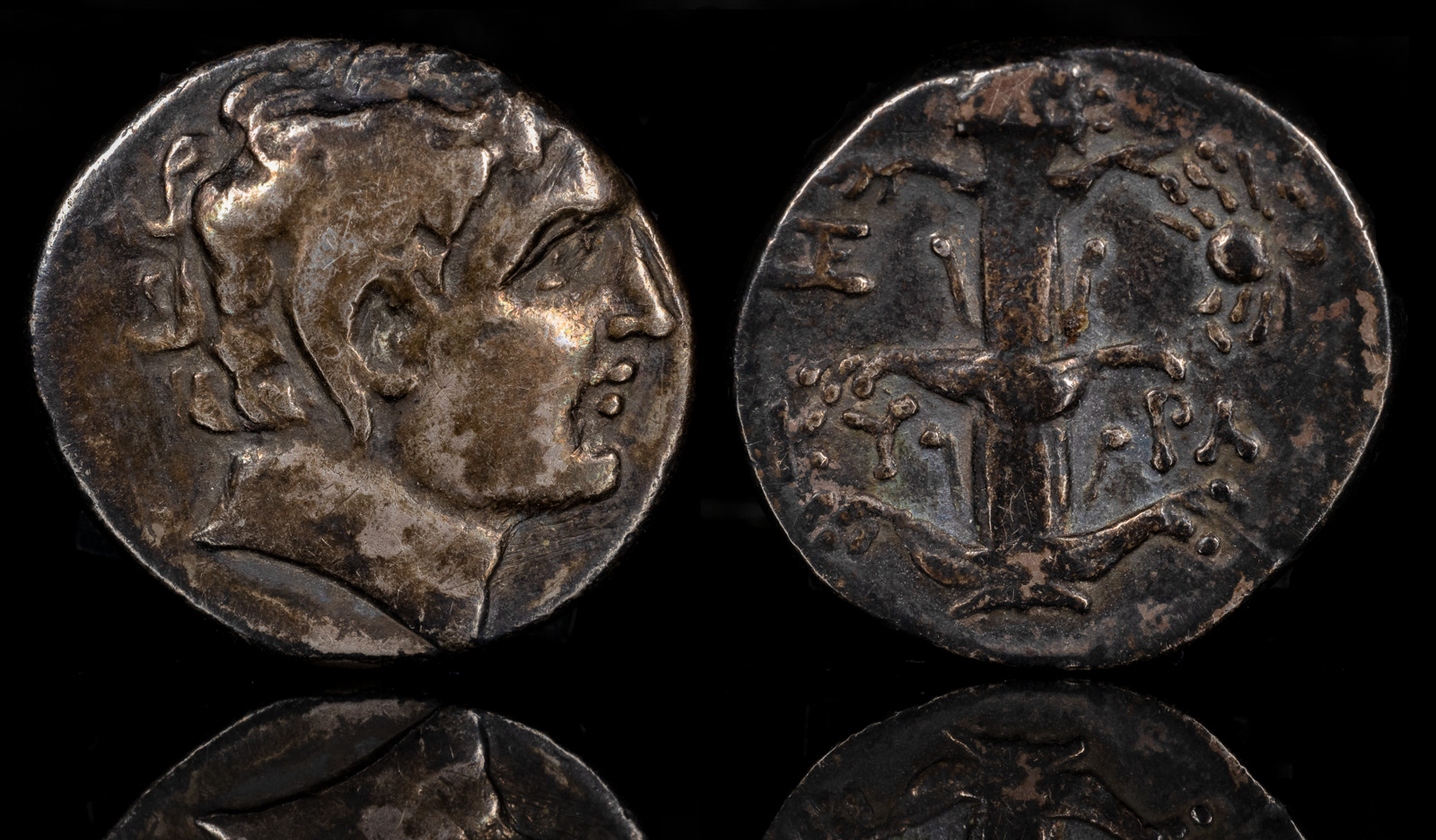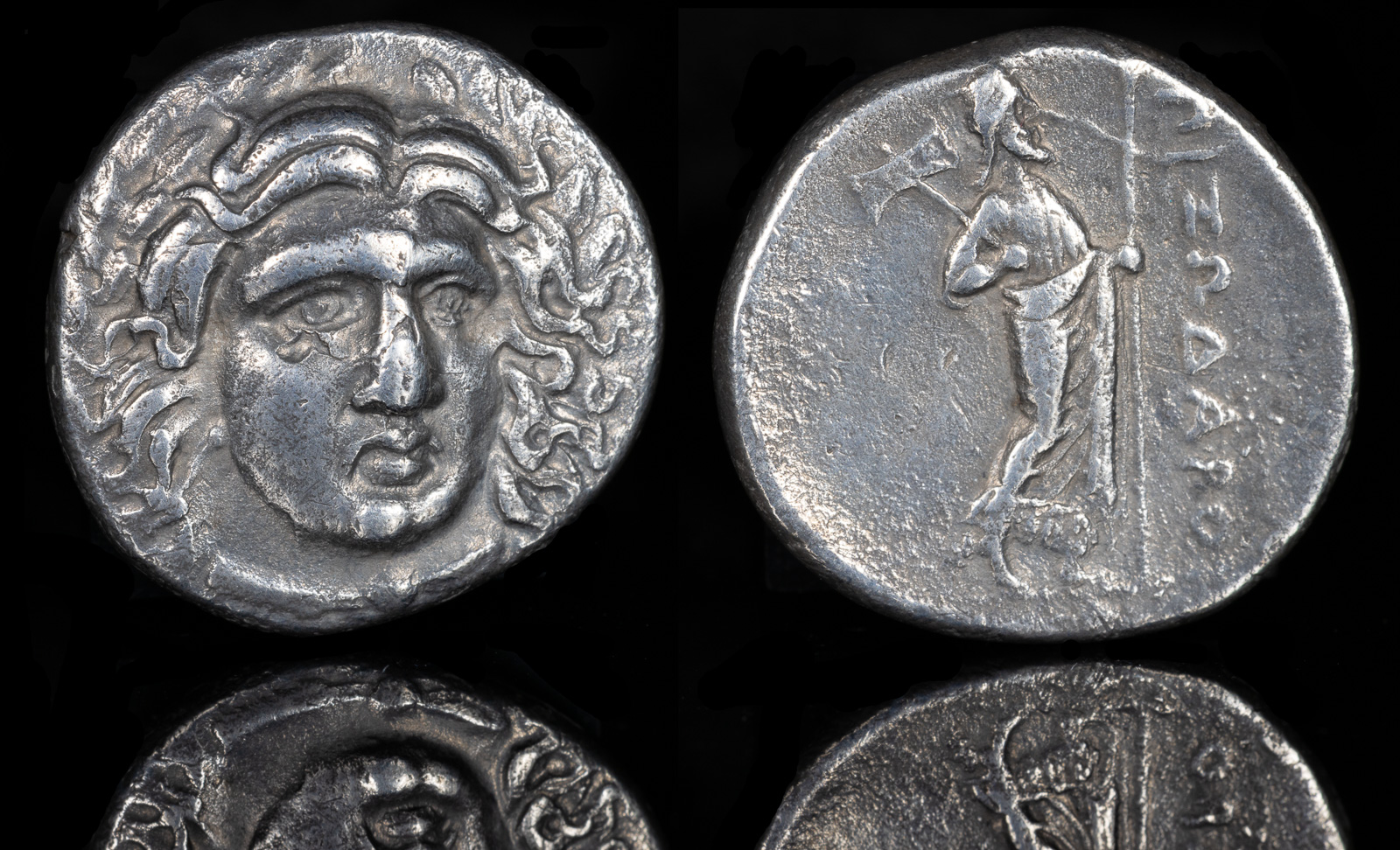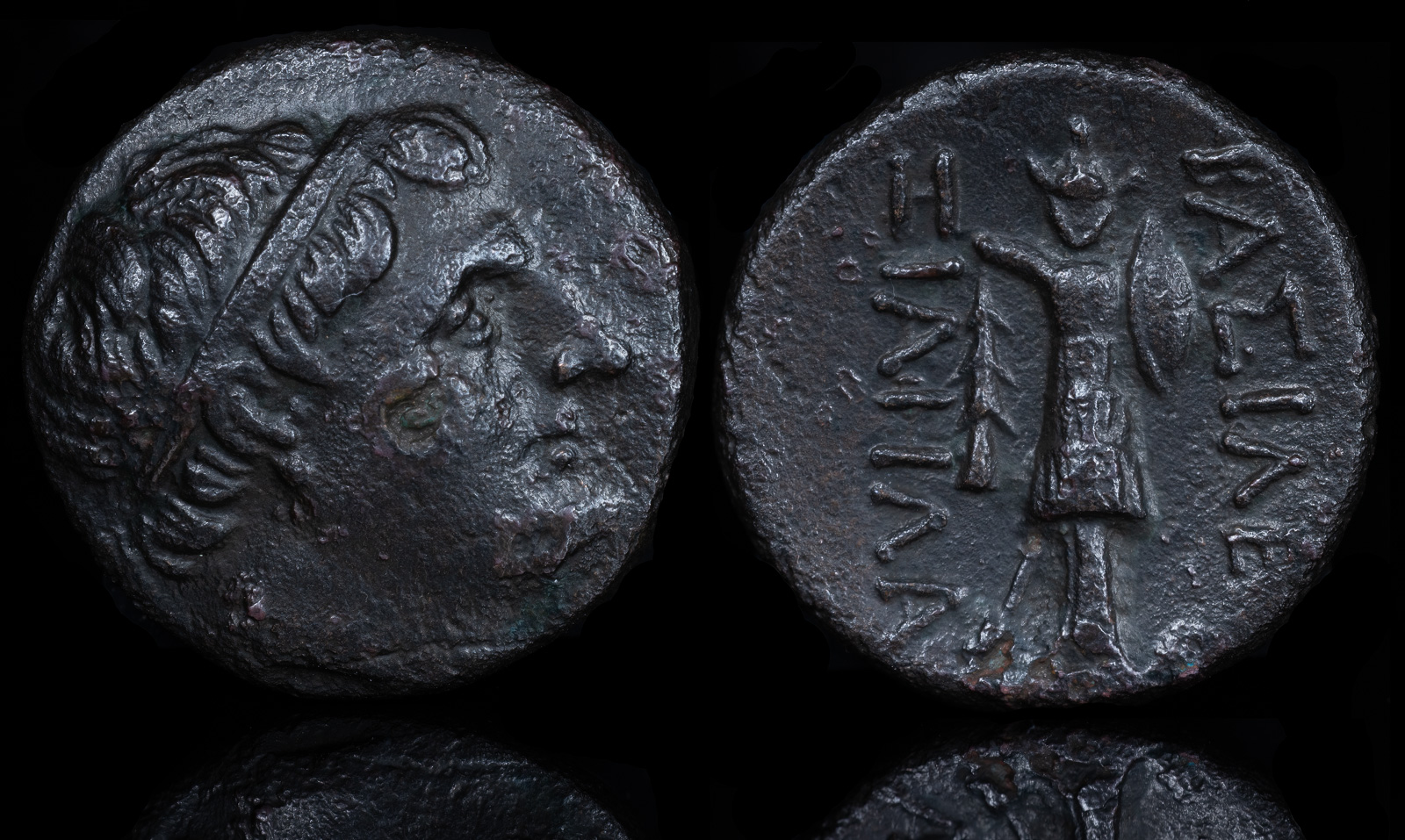Didrachm
View All Tags
The didrachm, meaning “two drachmas” in Greek, was a silver coin widely used in ancient Greece and its colonies. It emerged as a significant denomination during the Archaic and Classical periods of Greek coinage, serving both as a medium of local commerce and a tool for international trade. The didrachm provides a fascinating lens through which to study the evolution of Greek coinage and the economic dynamics of the ancient Mediterranean world.
Over time, the prominence of the didrachm declined in favor of other denominations, such as the tetradrachm (four drachmas) and smaller fractional coins. The tetradrachm’s larger size and higher value made it more suitable for large-scale transactions and international trade, while smaller coins met the needs of everyday commerce. By the Hellenistic period (323–31 BCE), the didrachm had largely fallen out of common use, though it persisted in some regions, including the eastern provinces of the Roman Empire.

Kyrene, Magas
Ptolemaic governor, c. 300-282/75 BC
AR Didrachm 20mm, 7.30g, 12h
Head of Karneios r. R/ Silphion plant; ZE monogram to upper l., crab to upper r., KY-PA across lower field.
BMC 256; cf. SNG Copenhagen 1243

Satraps of Karia, Pixodaros AR Didrachm.
Halikarnassos, circa 341/0-336/5 BCE
Laureate head of Apollo facing, turned slightly to right / Zeus Labraundos standing to right, holding double-axe (labrys) over shoulder and lotus-tipped sceptre; ΠIΞΩΔAPOY to right.
HNO 241 (temporary); SNG Copenhagen 596-7; SNG Kayhan 891; SNG Von Aulock 2375-6;
6.53g, 19mm, 1h.

Kings of Bithynia. Ziailas, circa 250-230 BCE
AE 18 mm, 4.89 g, 1 h
Diademed head of Ziailas to right. Rev. BAΣIΛE[ΩΣ] / ZIAHΛA Tropy of arms. Mørkholm, Early Hellenistic Coinage, 416. SNG von Aulock 243
Ex Obolos October 2020